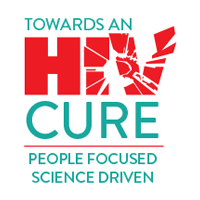

WHILE HIV CURE RESEARCH IS STILL IN ITS INFANCY, there are advances continuing to be made that were highlighted at this year’s conference. Australian cure researcher Sharon Lewin, who along with Dr. Stephen Deeks chaired the Towards an HIV Cure pre-conference symposium, spoke during a press conference about the difference between the “aspirational” goal of completely eliminating HIV from an individual, and the more intermediate goal of remission. HIV remission is defined as the ability to stop antiretroviral therapy (ART) and remain healthy, while keeping the virus under control. Lewin points out that we have an improved toolbox to measure the virus in blood and tissue in people on ART, but we don’t have perfect biomarkers on who can achieve remission, and more research is needed on where the virus persists, why it persists, and how to harness the immune response to eliminate it. Most importantly, as reported in this publication previously, a cure needs to be scalable, affordable, and available to everyone.
THE UPDATED Towards an HIV Cure strategy, released just prior to the conference, outlines the need for increased focus on key populations including those treated early in infection who tend to have lower levels of virus in their blood, and pediatric patients treated early who have different hiding spots for the virus due to distinct immune systems from adults. A tremendous amount of funding is going towards developing a protective vaccine (a large phase 3 study opens in November), which may help inform development of a therapeutic vaccine for those already infected. New gene therapy and gene editing tools have the potential to remove virus from cells (in test tube models currently), and to make cells resistant to HIV.
IN EPISTEM, a collaborative observational project of HIV-positive people with life threatening hematological conditions who require stem cell transplantation, there was a report of 24 patients from various European countries, 15 of whom received a transplant. All 15 saw a decrease in the viral reservoir that has not been seen before in other cure strategies, according to Annemarie Wensing during a press conference. The result was consistent whether or not the transplanted cells had the genetic mutation that “befriends” the CCR5 receptor on the CD4 T-cell, which HIV uses as an entrance into the cell. In one patient there was no trace of HIV in the blood and only trace amounts in tissue, and in another patient no trace of HIV in either the blood or tissue. However we don’t know if these patients are “cured” because all of the patients remained on therapy throughout the study, and are still on treatment. Timothy Brown, also known as the Berlin Patient, is the only person ever cured of HIV using stem cell (bone marrow) transplantation, and remains HIV free after more than seven years off therapy. Transplants are extremely risky; there was 60% mortality in this observational study, re-emphasizing the fact that while this is not a feasible cure strategy on a broader scale, it may help us gain a better understanding for future strategies.
ANN CHAHROUDI of Emory University presented data on an animal model that uses SIV, the simian (monkey) version of HIV, in infant macaques. This is a novel in vivo platform to test cure strategies in infants, and moving forward it can be used to assess different ways to promote remission or test new cure strategies such as monoclonal antibodies, vaccines, and others. These animal models will be increasingly important in moving the field forward, as it would otherwise be extremely difficult to conduct these types of studies in humans.
TIME TO viral rebound is the amount of time it takes for the virus to bounce back in the absence of therapy. This is an intense area of research as a better understanding and measures of time to viral rebound will be needed when designing studies that use analytical treatment interruptions (ATIs) to test cure strategies. In some individuals who start therapy during primary HIV infection (PHI), stopping treatment is not followed by viral rebound, but rather a period of remission or viraemic control. Transient viraemic control can also occur in untreated PHI before the viral load becomes detectable. In a poster by G.E. Martin and colleagues, in a study comparing untreated and treated controllers, the duration of control did not vary between treatment groups, showing that some untreated patients during PHI experience prolonged viral control. The authors concluded that this suggests the impact of early ART on post-treatment control may be overestimated if the dynamics of viral rebound in untreated individuals are not considered.
IN ONE of the most thought provoking presentations in the closing lecture at the HIV cure pre-conference, John Wherry from the University of Pennsylvania addressed the many common mechanisms that affect both cancer cells and HIV-infected cells. In the fields of oncology and HIV cure, researchers want to improve immune control, and many latency-reversing agents (LRAs) being studied in HIV cure research originated in the cancer field. In oncology, LRAs are used in combination, and for a prolonged period of time, and the same will most likely be needed to achieve HIV remission. Wherry concluded with the astute observation that the two fields will need to talk and work more closely together and in collaboration going forward.

